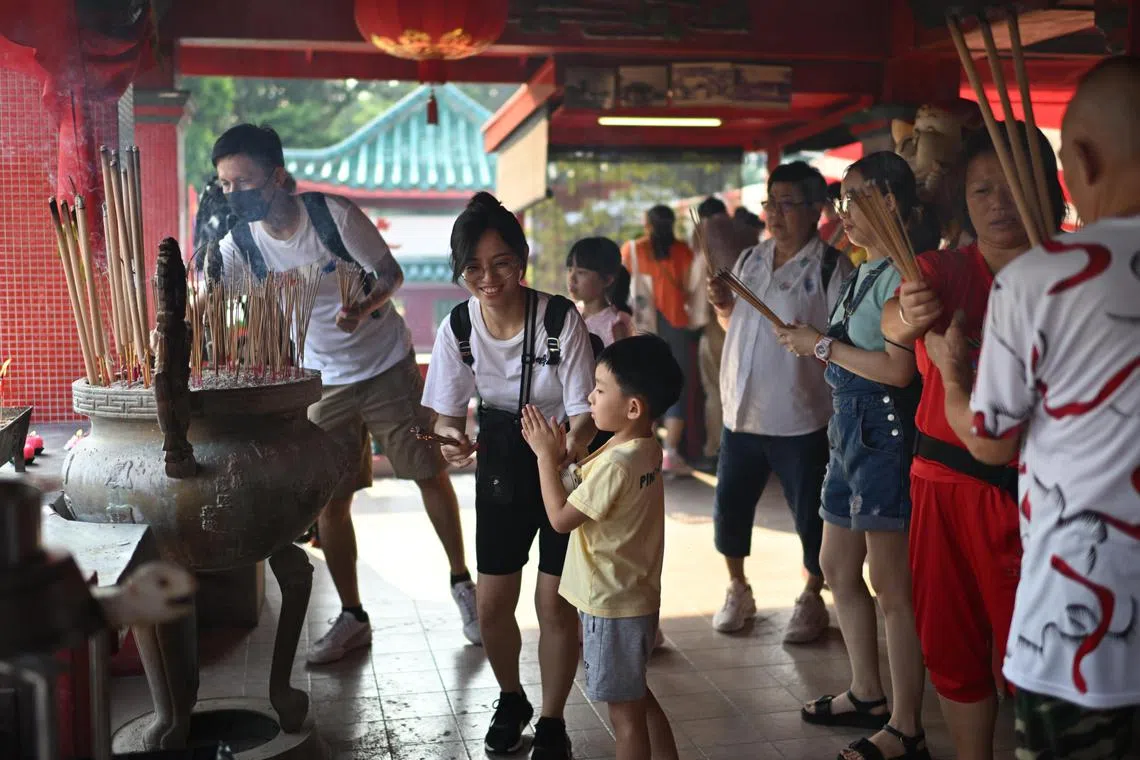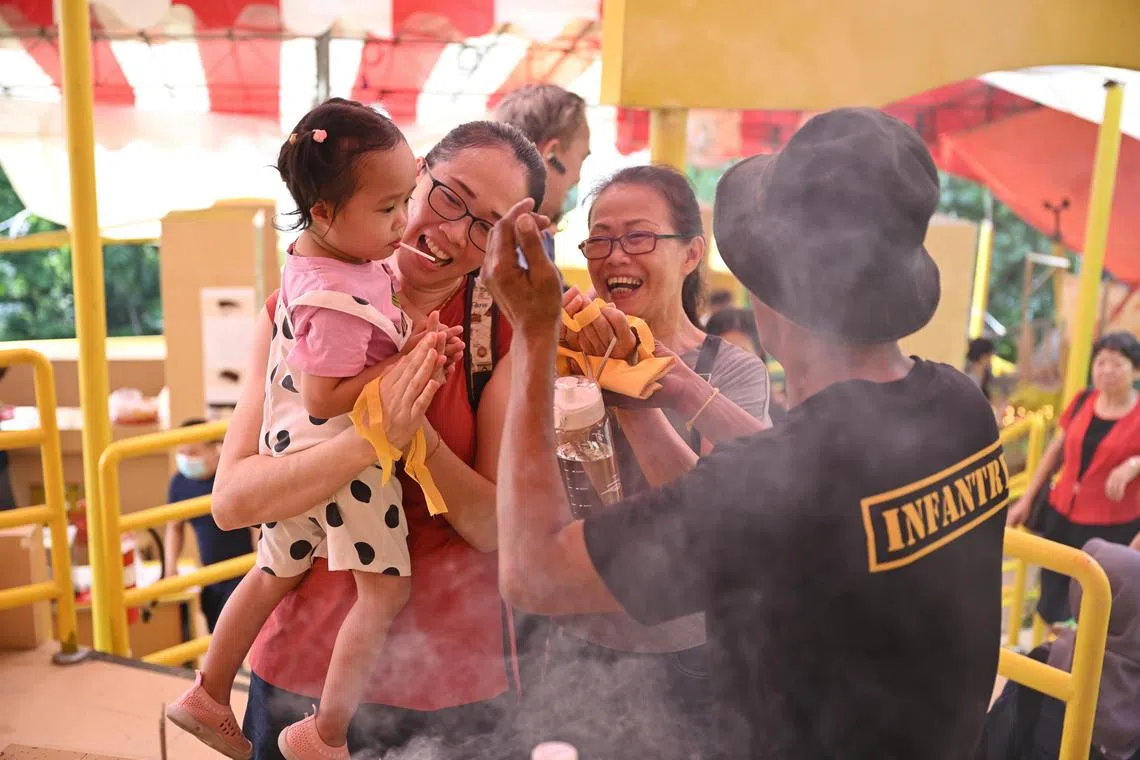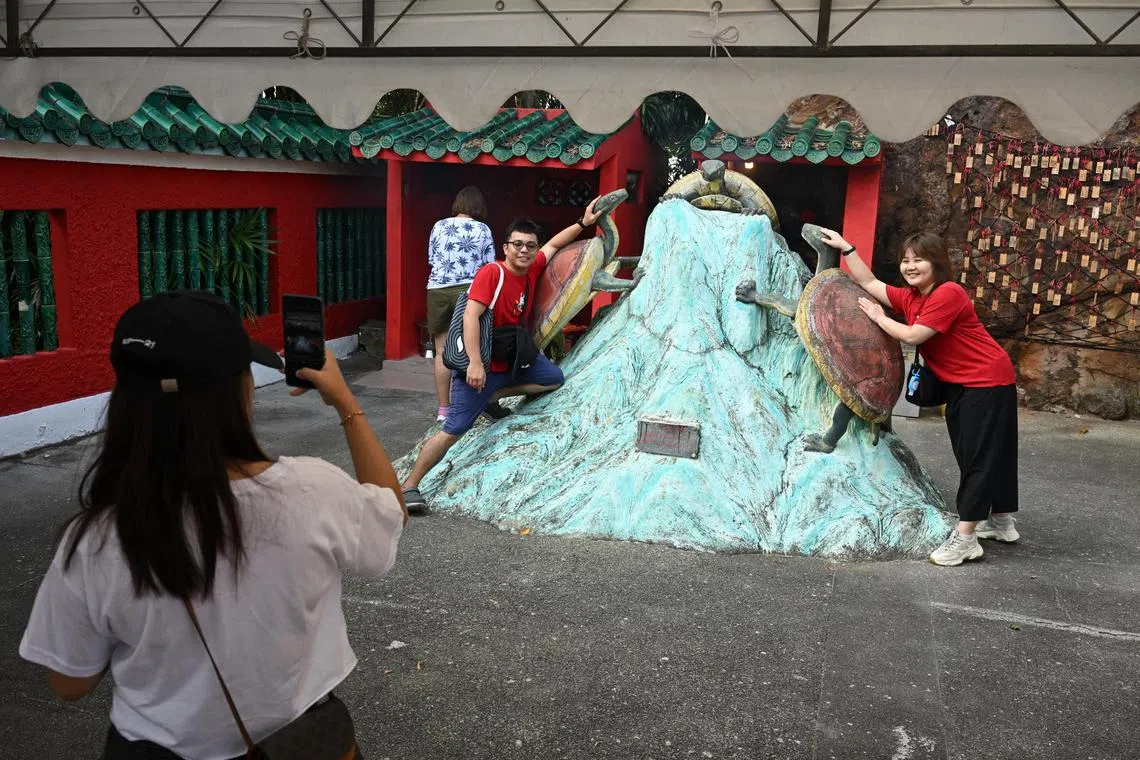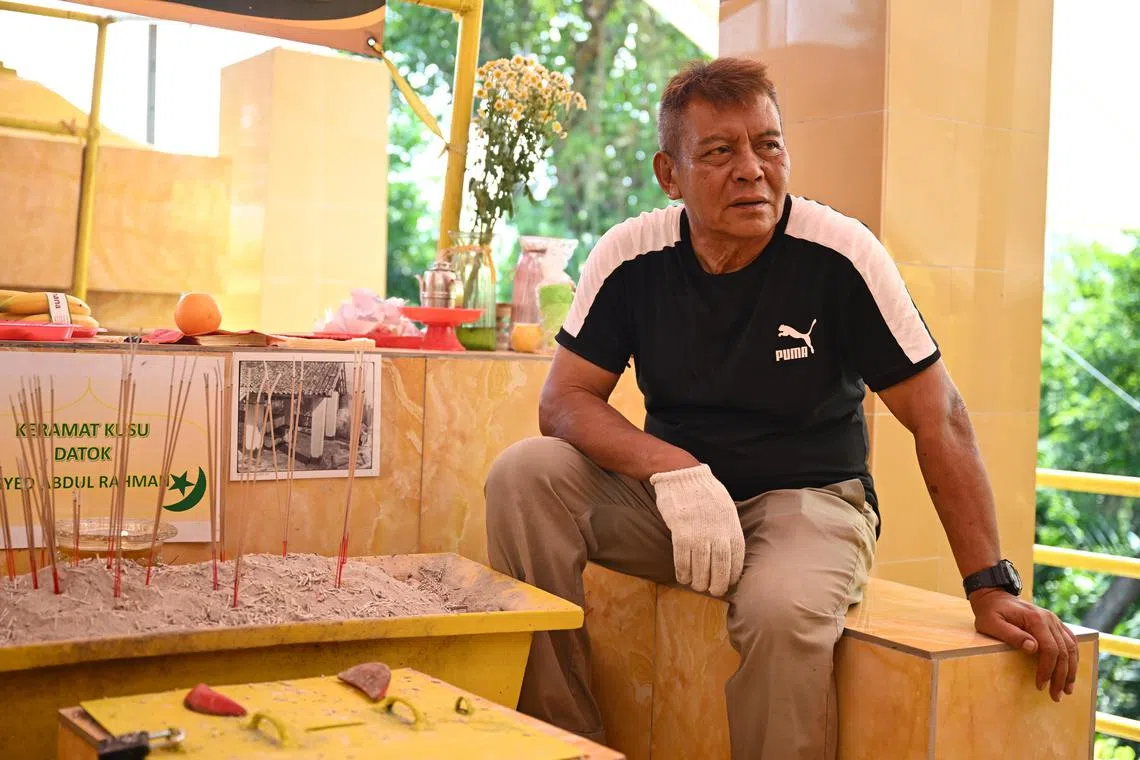Kusu Island comes to life as pilgrimage season kicks off; temple celebrates 100th anniversary
Sign up now: Get ST's newsletters delivered to your inbox
Follow topic:
SINGAPORE - Since she was a little girl, every ninth lunar month, Madam Hor Foong Kheng would take the ferry to Kusu Island with her parents to pray for blessings.
On Sunday, the electronics operator, now 59, made the pilgrimage alone, as her father has died while her mother has mobility issues. At the keramat, she replaced the fraying amulet around her wrist from the previous year, and got two more amulets to give to her mum and younger sister.
“I have to wear it carefully because if it breaks, it’s bad luck,” she said of the amulet, which she carries everywhere as she believes it protects her from harm.
Madam Hor was among some 1,000 devotees who made the trek to Kusu Island on the first day of the Kusu pilgrimage season as at 5pm on Sunday, according to Singapore Island Cruise and Ferry Services. The month-long season continues until Nov 12.
From 7.30am, the usually sleepy island saw a steady stream of devotees arriving by ferry, with the crowd peaking at about 1pm.
Many pilgrims followed the established routine of first praying at Da Bo Gong Temple, before climbing the steps to three Malay shrines, or keramat, atop a small hill nearby.
At the temple, devotees prayed to the two main Chinese deities housed there: the God of Prosperity and Guan Yin, the Goddess of Mercy. Clasping joss sticks, many knelt on the ground in thoughtful prayer as the scent of incense filled the air.
Built in 1923, the brightly painted temple marks its centenary in 2023.

Madam Hor Foong Kheng, 59, has made the pilgrimage to Kusu Island every ninth lunar month since she was a little girl. She was among the 1,000 devotees who made the pilgrimage on Oct 15.
ST PHOTO: SHINTARO TAY
Temple caretaker Seet Seng Huat, 74, said the number of visitors to the island has been falling over the years, but nevertheless, he prefers to keep the rituals simple, rather than change things to attract more to come.
“We hope for more visitors this year,” he said as devotees around him filled vases with fresh flowers, which they placed next to offerings of fruit and nian gao (glutinous rice cakes).
Despite the stifling heat, devotees young and old made the climb up the 152 steps to the keramat, many arriving at the top soaked in sweat. On the way up, shouts of “huat ah!” – a Hokkien expression for prosperity – could be heard.

The Kusu Island pilgrimage season began on Oct 15, with crowds of people at Da Bo Gong Temple, which marks its centenary this year.
ST PHOTO: SHINTARO TAY
Keramat assistant Taha Arshad, 59, called out prayers in a mix of Malay and Hokkien, imploring the spirits to bless the visitors with good fortune in their work and lives. He tied strips of yellow cloth around their wrists, before chanting over them in a haze of incense smoke.
One woman brought a wreath of white flowers, which keramat assistants draped around the gravestone at the shrine of Dato Syed Abdul Rahman.

(From left) Three-year-old Tan Joenee, Ms Heng Lee Min and Ms Kong Kwai Yeng being blessed at the keramat on Kusu Island on Oct 15.
ST PHOTO: SHINTARO TAY
After their prayers, some devotees tied their strip of yellow cloth around a tree outside the keramat, while others pinned their hopes on 4-D lottery numbers which they scrawled onto a rock wall painted yellow.
Among those praying for fertility at the keramat were four young married couples.
Delivery rider Pay Hwee Kiat, 30, sported matching red T-shirts with his wife of two years, customer service executive Soh Xun Ling, 35. The couple, who are trying for a child, were on the first of three visits to the shrine. “We have to come here three times for our prayers to work,” said Mr Pay.

Mr Pay Hwee Kiat and his wife Soh Xun Ling posing for photos at the tortoise statue at Da Bo Gong Temple. The couple were praying for fertility as they are trying for their first child.
ST PHOTO: SHINTARO TAY
The serenity at the keramat on Sunday was a stark contrast to April 2022, when a raging fire engulfed and destroyed the three shrines
Without fire hydrants on the island, firefighters had to link 18 lengths of hoses so that seawater pumped from a Singapore Civil Defence Force vessel could be used to put out the blaze.
Caretaker Ishak Samsudin said reconstruction work for the shrines was completed in time for the 2022 pilgrimage season, thanks to donations from some friends and companies. Retiling was also done at a cost of over $200,000, which came from devotees.
A second set of stairs, with guard rails painted yellow, has also been reopened after undergoing renovation in 2022.

Pilgrims climbing the staircase leading to the keramat on Oct 15, 2023.
ST PHOTO: SHINTARO TAY
Rebuilding the roof will take longer, said Mr Ishak, as he is unable to foot the hefty $240,000 price tag quoted by contractors. In place of the original metal roof, temporary tentage protects the shrines from the elements. The keramat is also missing its original walls and a storeroom where joss paper was kept.
Mr Ishak, 60, who took over the care of the keramat from his father, said he looks forward to passing the torch to his 32-year-old son Isjacob Ishak, to whom he is teaching the ropes.
“It’s a unique place that can’t be found anywhere else, with people of different races and countries praying in the same place, and showing their sincerity in their own ways,” Mr Ishak said.

Caretaker Ishak Samsudin, who took over care of the keramat from his father, plans to pass the job on to his son.
ST PHOTO: SHINTARO TAY
Besides Singaporeans, the annual pilgrimage season also draws a number of tourists and guest workers.
Perak native Tan Yong Zhong, 65, made the trip from Malaysia with three of his daughters, who live in Singapore, and his grandchildren aged five and eight. He said he used to visit Kusu Island every year, but the trips are becoming costlier as the Malaysian ringgit’s value drops against the Singapore dollar.
“I hope to come back here every year, as long as I can walk,” he said.
Ms Renu Phimngoen, a Thai working in Singapore, has also made it a point to return each year. On this visit, she even brought four friends along.
The 56-year-old secretary said: “We pray for family and friends to be healthy, and that everything goes smoothly.”

